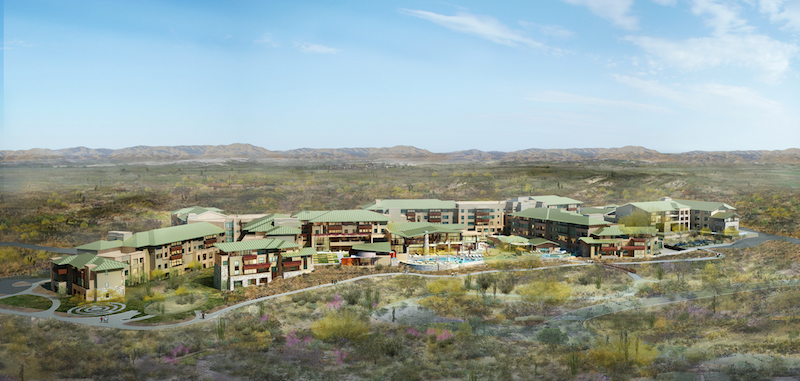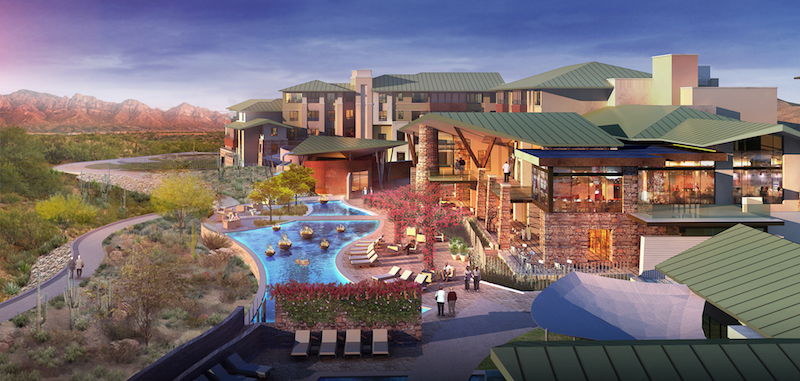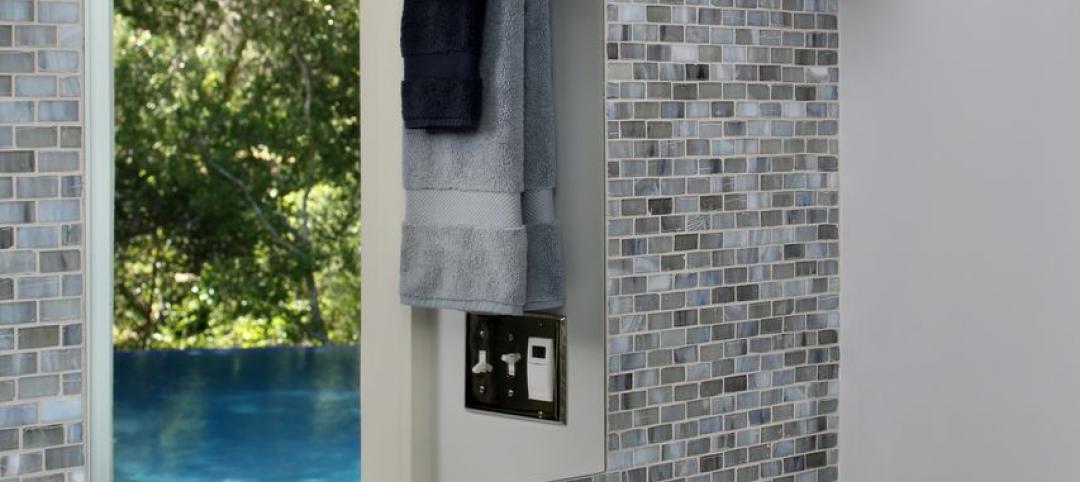Lisa Israel, CEO and President of La Posada, and Joni Condi, COO and Senior VP of La Posada, are working to build a community that promotes healthy aging, gives residents ample freedom of choice, and creates a sense of belonging in which they may thrive. To bring this vision to life, Israel and Condi have partnered with Diversified Design and Construction, landscaping firm Talley Associates, interior design firm THW Design, and three: living architecture to create Nakoma Sky.
Nakoma Sky is a 70-acre, desert-resort senior living community designed for an active lifestyle. La Posada, a nonprofit senior living organization that owns and manages properties, has engaged three: living architecture to design a living environment that connects its residents to the outdoors, not only visually but also socially. With more than 30 years of experience designing luxury hospitality and senior living, three, in conjunction with La Posada has created a vision that will welcome current and future generations to a leisure resort-lifestyle that encourages growth and wellness.
“Oro Valley is just north of Tucson, a resort destination that is perfect for the vision we are going to bring to reality,” Gary Koerner, AIA, NCARB, President of three: living architecture, said in a press release. “The property is nestled in the valley foothills between Catalina and Saguaro Mountain Ranges, with a picturesque backdrop of vivid mountains that are illuminated in warm, brilliant colors twice a day at sunrise and sunset. With the natural surroundings being breathtaking on their own, we aimed to put together a layout with buildings that would maximize views from any point on the property, while also being mindful of the community’s impact on the environment. The result of our creative endeavors is a ‘Neo-Wrightian’ desert-architectural-style community nested into the desert landscape with unobstructed views of the nearby mountain ranges, offering indoor and outdoor living experiences.”
 Rendering courtesy of three: living architecture
Rendering courtesy of three: living architecture
Nakoma Sky is a 500,000-sf community that is estimated to cost between $90 and $100 million. It’s a sizable project featuring 220 spacious independent living apartments available in one, two and three bedroom floorplans, as well as 24 assisted living apartments and 24 memory care apartments. The five-story community will sit above an underground parking garage located beneath the independent living entry court. In addition, residents will be able to enjoy amenities in common areas scattered throughout the campus, including: resident lounges, a library, a fitness center overlooking the mountains, areas for multi-purpose use, art studios/crafting rooms, meeting spaces, a salon, varying dining venues, and outdoor recreational areas.
One of the most notable outdoor amenities is a 3,400-sf infinity pool located near the heart of the community. The pool, which features customized acoustics and lighting, has a mist curtain that acts as a screen for movies to be projected on. Other artistic outdoor amenities include a sculpture garden, a stargazing platform, a yoga lawn, courtyards with splash pools for children, dog parks, hiking trails, a playground, fireplaces, BBQ grills, outdoor dining venues, an aerobics pool, and desert gardens. The architectural team wanted to create outdoor spaces where residents could host parties or meet for gatherings.
For indoor amenities, three incorporated expansive windows allowing sunshine to spill into the community. The roof forms compliment the mountains’ angles and allow for tiered viewpoints. The entire design is geared toward a well-traveled active resident who wants to live life to the fullest.
 Rendering courtesy of three: living architecture
Rendering courtesy of three: living architecture
Related Stories
| May 20, 2014
Kinetic Architecture: New book explores innovations in active façades
The book, co-authored by Arup's Russell Fortmeyer, illustrates the various ways architects, consultants, and engineers approach energy and comfort by manipulating air, water, and light through the layers of passive and active building envelope systems.
| May 19, 2014
What can architects learn from nature’s 3.8 billion years of experience?
In a new report, HOK and Biomimicry 3.8 partnered to study how lessons from the temperate broadleaf forest biome, which houses many of the world’s largest population centers, can inform the design of the built environment.
| May 13, 2014
19 industry groups team to promote resilient planning and building materials
The industry associations, with more than 700,000 members generating almost $1 trillion in GDP, have issued a joint statement on resilience, pushing design and building solutions for disaster mitigation.
| May 11, 2014
Final call for entries: 2014 Giants 300 survey
BD+C's 2014 Giants 300 survey forms are due Wednesday, May 21. Survey results will be published in our July 2014 issue. The annual Giants 300 Report ranks the top AEC firms in commercial construction, by revenue.
| Apr 29, 2014
USGBC launches real-time green building data dashboard
The online data visualization resource highlights green building data for each state and Washington, D.C.
| Apr 11, 2014
ULI report documents business case for building healthy projects
Sustainable and wellness-related design strategies embody a strong return on investment, according to a report by the Urban Land Institute.
| Apr 9, 2014
Steel decks: 11 tips for their proper use | BD+C
Building Teams have been using steel decks with proven success for 75 years. Building Design+Construction consulted with technical experts from the Steel Deck Institute and the deck manufacturing industry for their advice on how best to use steel decking.
| Apr 2, 2014
8 tips for avoiding thermal bridges in window applications
Aligning thermal breaks and applying air barriers are among the top design and installation tricks recommended by building enclosure experts.
| Mar 27, 2014
16 kitchen and bath design trends for 2014
Work on multifamily housing projects? Here are the top kitchen and bath design trends, according to a survey of more than 420 kitchen and bath designers.
| Mar 26, 2014
Callison launches sustainable design tool with 84 proven strategies
Hybrid ventilation, nighttime cooling, and fuel cell technology are among the dozens of sustainable design techniques profiled by Callison on its new website, Matrix.Callison.com.

















